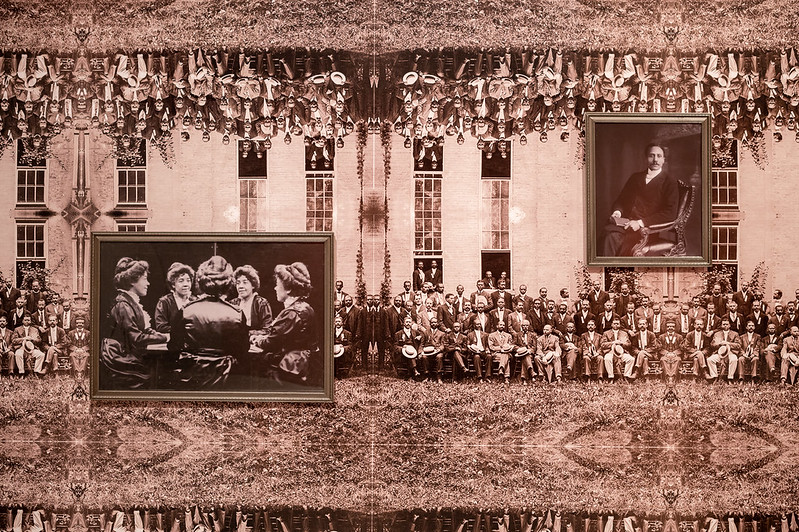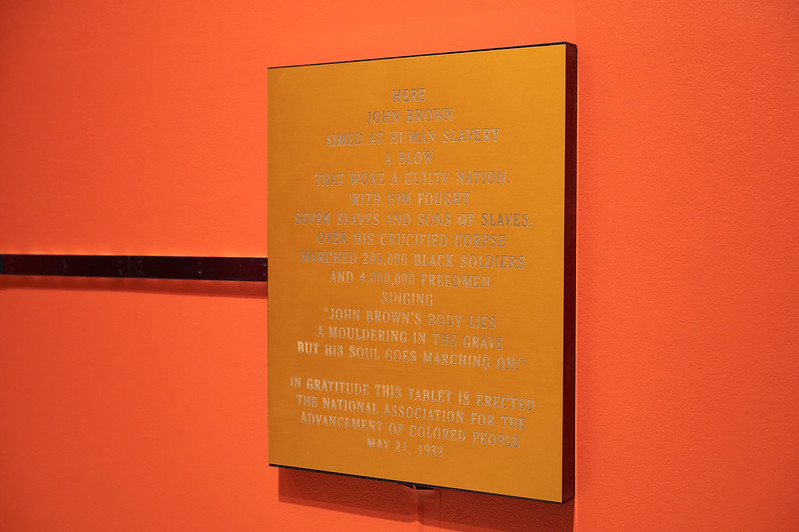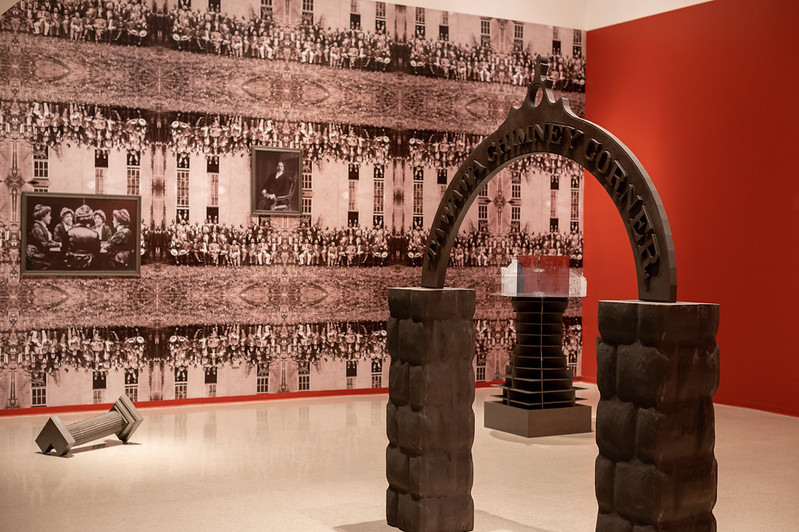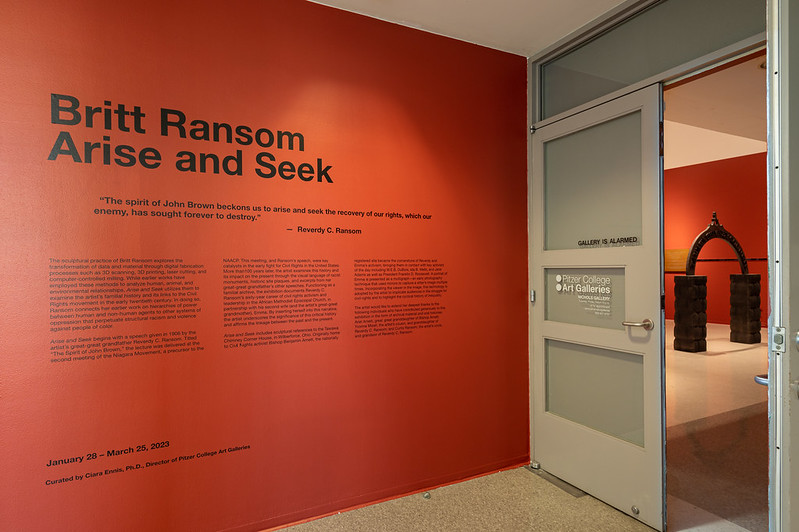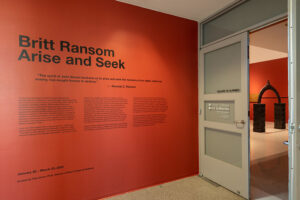Arise and Seek
Britt Ransom (2022)Britt Ransom: Arise and Seek “The spirit of John Brown beckons us to arise and seek the recovery of our rights, which our enemy, has sought forever to destroy” – Reverdy C. Ransom The sculptural practice of Britt Ransom explores the transformation of data and material through digital fabrication processes such as 3D scanning, 3D printing, laser cutting, and computer-controlled milling. While earlier works have employed these methods to analyze human, animal, and environmental relationships, Arise and Seek utilizes them to examine the artist’s familial history and its links to the Civil Rights movement in the early twentieth century. In doing so, Ransom connects her earlier work on hierarchies of power between human and non-human agents to other systems of oppression that perpetuate structural racism and violence against people of color. Arise and Seek begins with a speech given in 1906 by the artist’s great-great grandfather Reverdy C. Ransom. Titled “The Spirit of John Brown,” the lecture was delivered at the second meeting of the Niagara Movement, a precursor to the NAACP. This meeting, and Ransom’s speech, were key catalysts in the early fight for Civil Rights in the United States. More than100 years later, the artist examines this history and its impact on the present through the visual language of racist monuments, historic site plaques, and excerpts from her great-great grandfather’s other speeches. Functioning as a familial archive, the exhibition documents Reverdy C. Ransom’s sixty-year career of civil rights activism and leadership in the African Methodist Episcopal Church, in partnership with his second wife (and the artist’s great-great grandmother), Emma. By inserting herself into this narrative, the artist underscores the significance of this critical history and affirms the linkage between the past and the present. Arise and Seek includes sculptural references to the Tawawa Chimney Corner House, in Wilberforce, Ohio. Originally home to Civil Rights activist Bishop Benjamin Arnett, the nationally registered site became the cornerstone of Reverdy and Emma’s activism, bringing them in contact with key activists of the day including W.E.B. DuBois, Ida B. Wells, and Jane Adams as well as President Franklin D. Roosevelt. A portrait of Emma is presented as a multigraph—an early photography technique that used mirrors to capture a sitter’s image multiple times. Incorporating the viewer in the image, this technology is adopted by the artist to implicate audiences in the struggle for civil rights and to highlight the cyclical history of inequality.
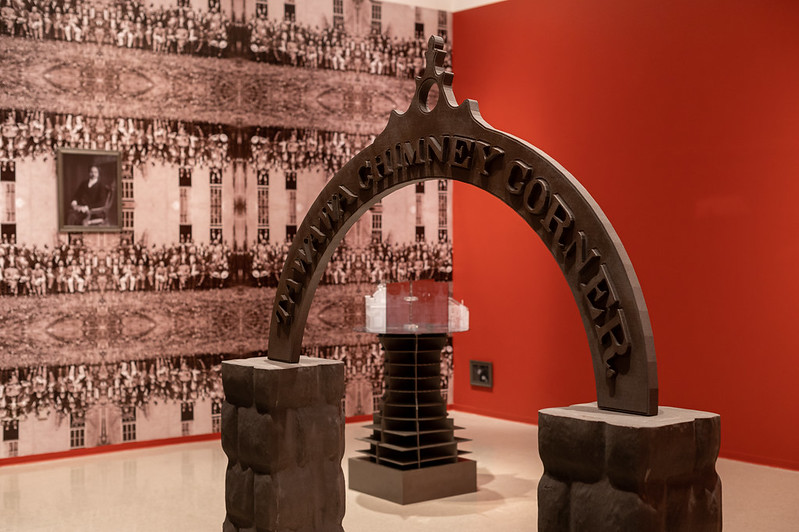
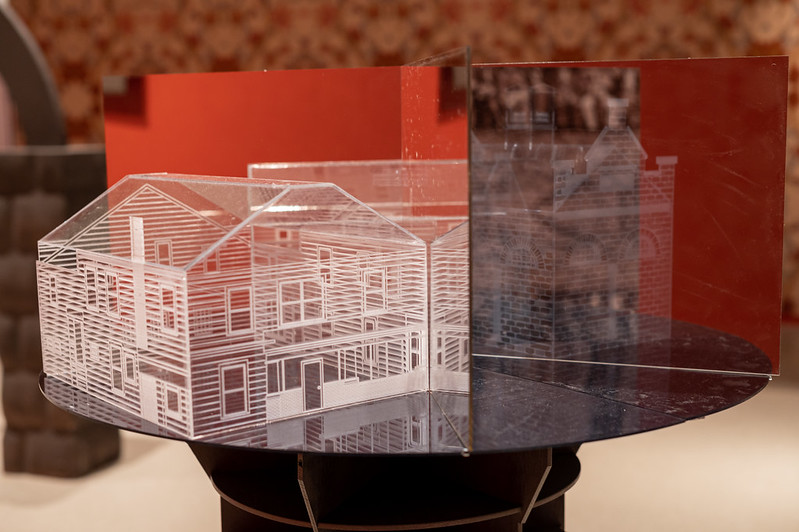
The artist would like to extend her deepest thanks to the following individuals who have contributed generously to this exhibition in the form of archival material and oral histories: Ariel Arnett, great-great granddaughter of Bishop Arnett; Yvonne Mizell, the artist’s cousin, and granddaughter of Reverdy C. Ransom; and Curtis Ransom, the artist’s uncle, and grandson of Reverdy C. Ransom. Exhibition Text Written by Ciara Ennis, Curator at Pitzer College Art Galleries, and Britt Ransom Associate Professor of Art, Carnegie Mellon University.
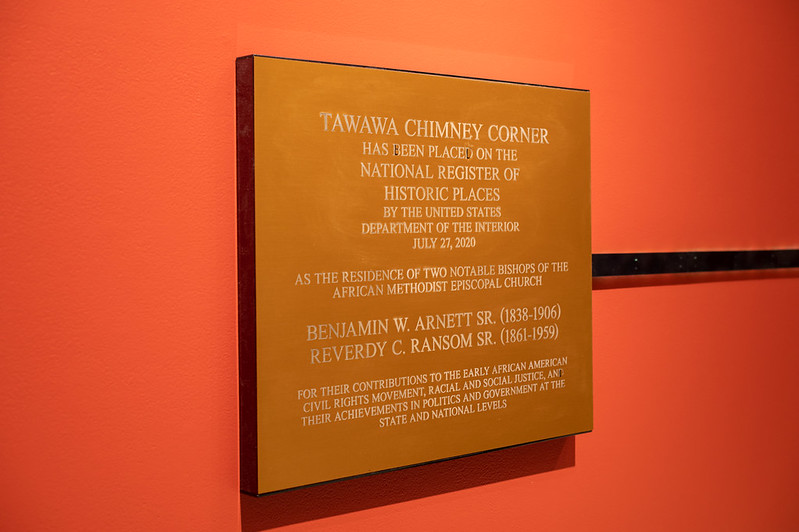
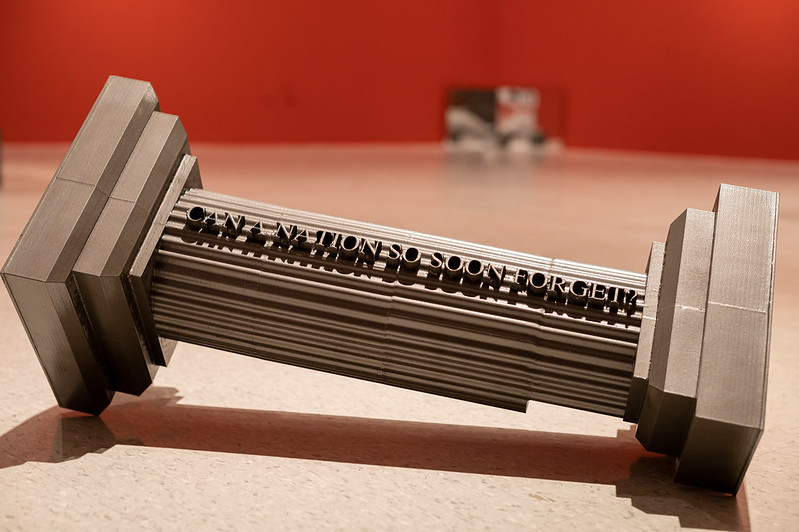
This project was made possible in part by the Frank-Ratchye Further Fund Grant #2023-001. Additional images are available here.
Photography: Christopher Wormald
Instagram @Christopher.s.w
